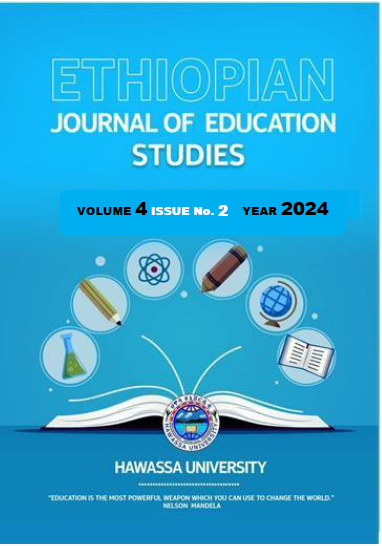Contributions of instructional leadership and school improvement program (as reforms) for school effectiveness in secondary schools of the Technology Village Woreda as of Hawassa University
Keywords:
Educational Reforms, Istructional Leadership, School Improvement Program, School Effectiveness, Secondary Schools, Teachers, PrincipalsAbstract
The main objective of this study was to investigate the contributions of educational reforms such as instructional leadership and school improvement program (as essential educational/school reforms) for school effectiveness in Secondary Schools of the Technology Village Woredas of Hawassa University. To attain this objective a descriptive survey method was employed considering that it could help to get reliable and authentic information on the topic to be studied. The method was also chosen for its relatively low cost and its suitability to show situations as they currently exist. It was conducted in a sample of six secondary schools with grades 9 to 12 that were selected with the help of a simple random sampling technique. The participants of the study were 153 teachers, 23 school leaders (principals, vice-principals, and supervisors), 12 Parent Teacher Student Association (PTSA) members, 12 students’ council members, and six school improvement programs (SIP) coordinators from the sample schools of the study area. Instruments such as questionnaires, semi-structured interviews, focus group discussions, observation, and document analysis were employed to collect the data. As data analysis tools, inferential statistics such as Pearson coefficient of correlation, and T-test; and descriptive statistics as frequency counts, percentage distribution, mean, and standard deviation were used to analyze the quantitative data of the research. Qualitative data were being transcribed, coded, and analyzed simultaneously with the corresponding quantitative data by comparing responses concerning the research questions. It was revealed that schools as organizations were considered very strong in setting clear goals and in developing a clear vision and defining mission and values, important components while implementing school reforms that embrace instructional leadership and school improvement program (as essential educational/school reforms) for school effectiveness, to establish a common sense of direction and purpose for the major stakeholders of the school. The findings of the study also shown the very positive perception awarded towards the instructional leadership and school improvement program (as essential educational/school reforms) by the major stakeholders of school (principals, vice-principals, teachers, supervisors, SIP coordinators, PTSA members, and learners) for school effectiveness and improvement. Further, the findings of the study revealed that the contributions of instructional leadership and school improvement program (as essential educational/school reforms) in enhancing school effectiveness have been duly acknowledged by the major stakeholders of the schools. The commonly agreed barriers that negatively affect implementation of reforms such as instructional leadership and SIP in the schools were lack of adequate capacity building (lack of in-depth training) programs for the secondary school’s major stakeholders (Principals, vice principals, Supervisors, School Improvement Program /SIP/ Coordinators, Parent-Teacher-Student Association /PTSA/ members, teachers, and students); and lack of strong commitment on the part of school leaders to be engaged in tasks related to instruction/teaching and learning to which any reform effort of school focuses. Finally, creating opportunities for continuous professional development and capacity-building programs were recommended for the secondary school’s major stakeholders (Principals, vice principals, Supervisors, School Improvement Program /SIP/ Coordinators, Parent-Teacher-Student Association /PTSA/ members, teachers, and students) on applying school reforms for school effectiveness.

